Genetics are my hobby. I have been breeding Syaian hamsters since 1994, and have worked with most genes. Since I am a big fan of passing knowledge on, I am slowly working on compiling a colors and markings chart. All pictures are my own. Please feel free to link to this page, but please do not take my pictures without asking. 🙂
 | Golden This girl, posing pretty, is a long-haired golden. Golden is the natural coloring of Syrian hamsters. |
Agouti Syrian Hamster Colors
| Cinnamon Cinnamon is another agouti color – one of my favorites! It has more of an orange look than any of the others, with a creamy undercoat. | 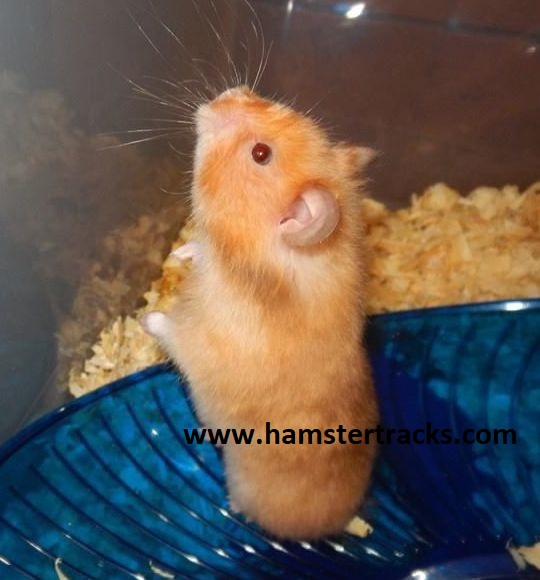 |
 | Yellow Yellow is another agouti color, the lightest single gene agouti color there is. Yellow is one of the colors I focus on here at Hamster Tracks, but usually not plain yellow. I like the yellow-black and black tortiseshell combinations, which we will get to! |
| Honey Honey is a combination of the cinnamon and yellow genes. |  |
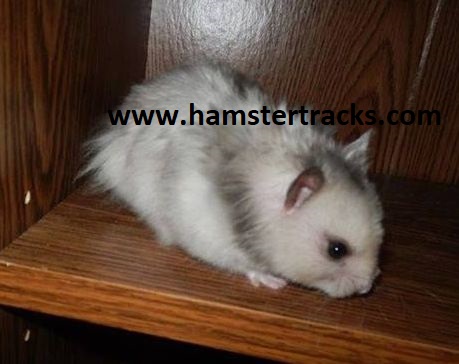 | Silver Grey Silvery grey takes the golden coloring and changes it to shades of grey. This is a very FUN but tricky gene to work with. It affects all other colors! Note: There are also dark grey and light grey colors, but I have never worked with these genes, so I am don’t have pictures to provide here. |
| Silver + Cinnamon This is not a common combination, or one with a name, but it was one I inadvertently bred. (In fact this is our “Duck” as a baby, the “ugly duckling” in his litter who turned into something beautiful as he grew!) As this is an educational page, here is what the 2 colors together look like. 🙂 The cheek flashes are faint, and disappear with age. |  |
| Rust Rust is an agouti color, meaning there is a white cheek flash, like in the golden hamsters. Rust looks similar to golden, but is a shade lighter. |
Self Colored Syrian Hamsters
“Self” means the hamster is, genetically, all one color. Patterns may be added, but the color is solid, with no cheek flashes.
 | Black-Eyed Cream This is one of the more popular hamster colors among Syrian hamster enthusiasts! |
| Red-Eyed Cream Red-eyed cream is simply cream with the cinnamon gene added. The cream becomes lighter, the eyes become red, and the ears become flesh colored. (This girlie is also has the satin gene, which makes her darker than she would normally be.) | 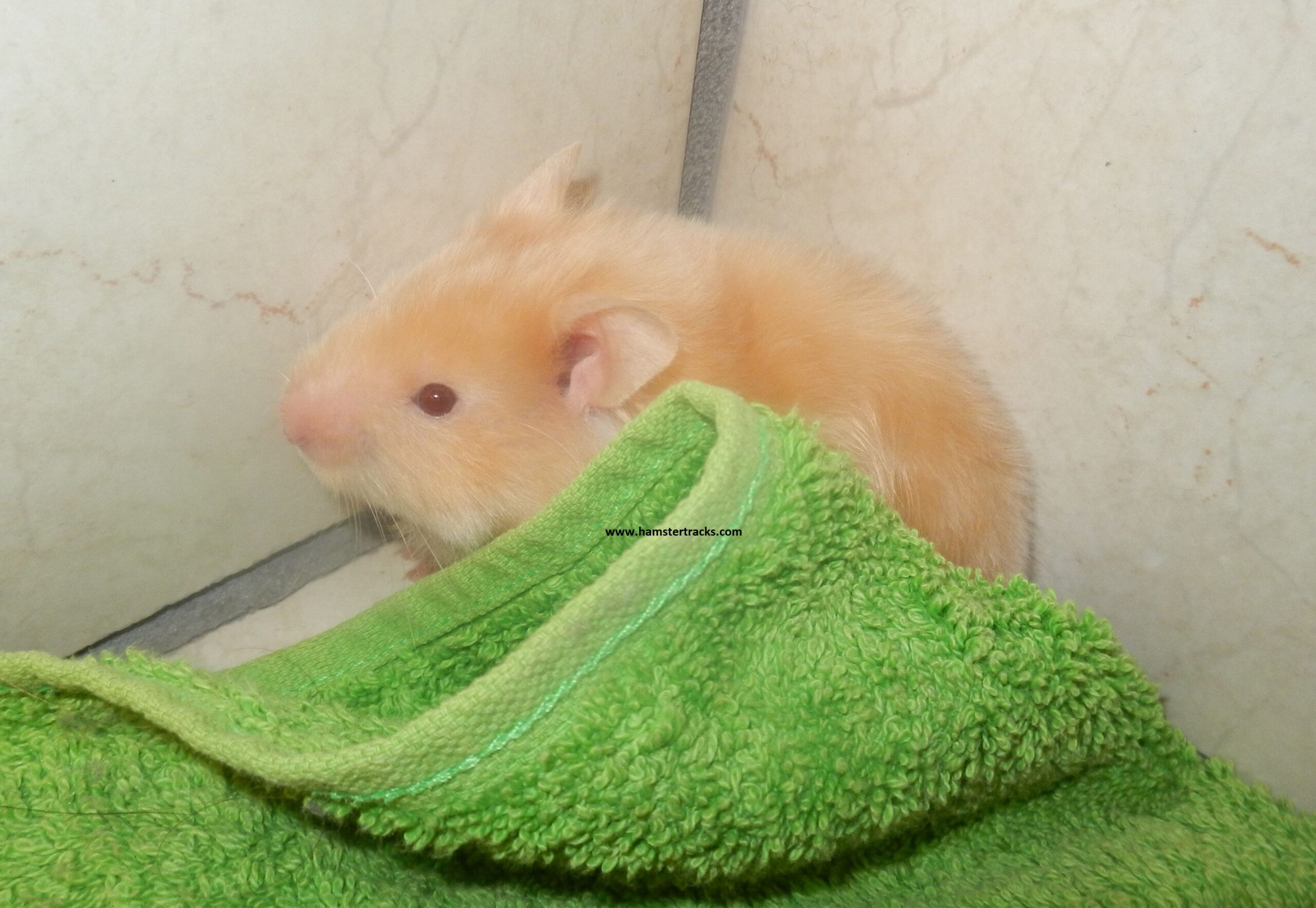 |
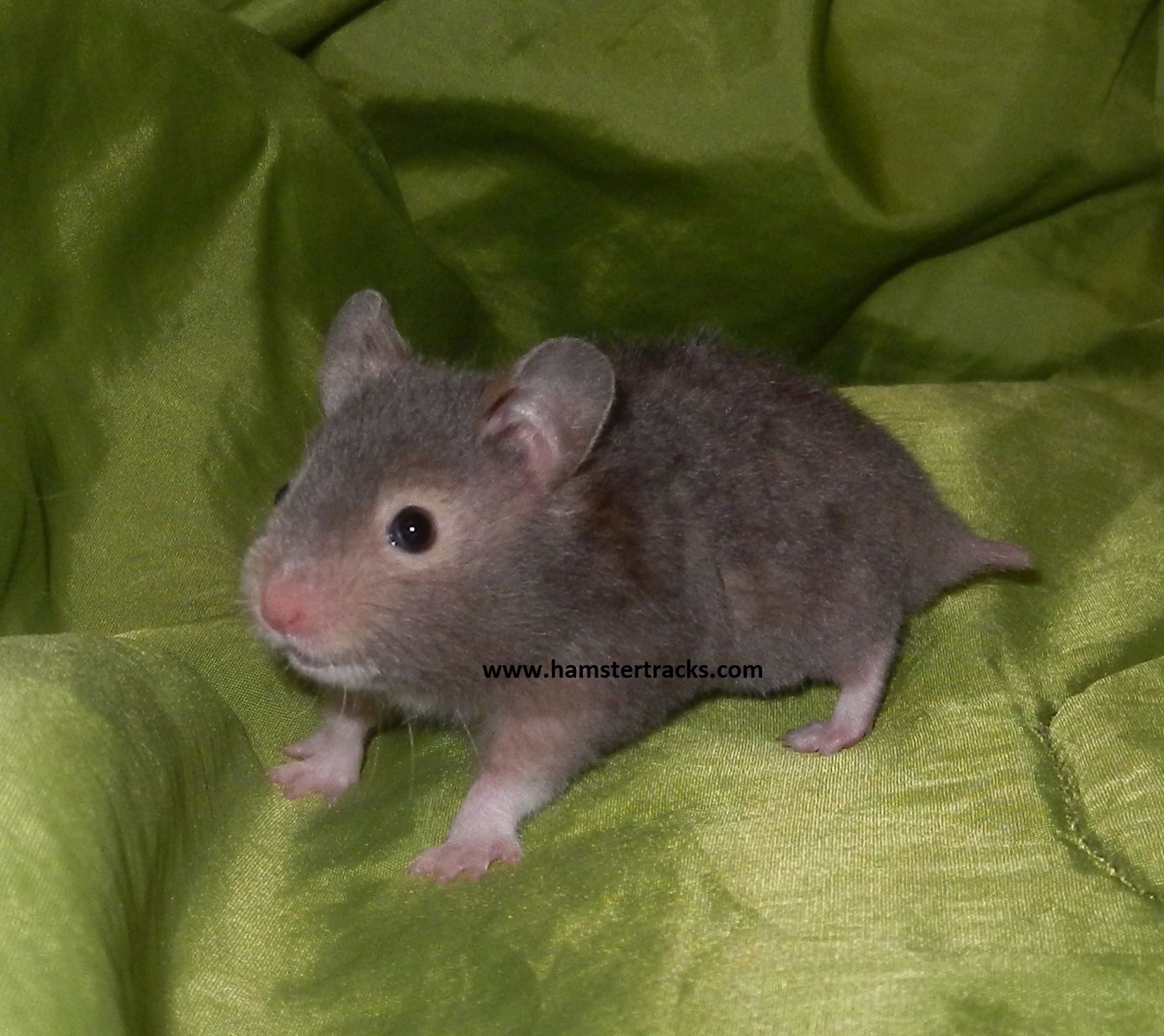 | Sable I will explain more about the umbrous gene later. Right now we’re going to just jump right in with what the umbrous gene does on a cream hamster. It gives it a completely different look! The only “cream” left is the undercoat, which, incidentally, also shows up in the creamy eye ring, because of the way the fur is shorter right around the eyes. |
| Silver Sable Silver sable is cream, umbrous, and silver grey, as the name implies. The difference between sable, and silver sable is seen in the color of the eye rings – It is more like white, which, of course, also makes the undercoat the same. | 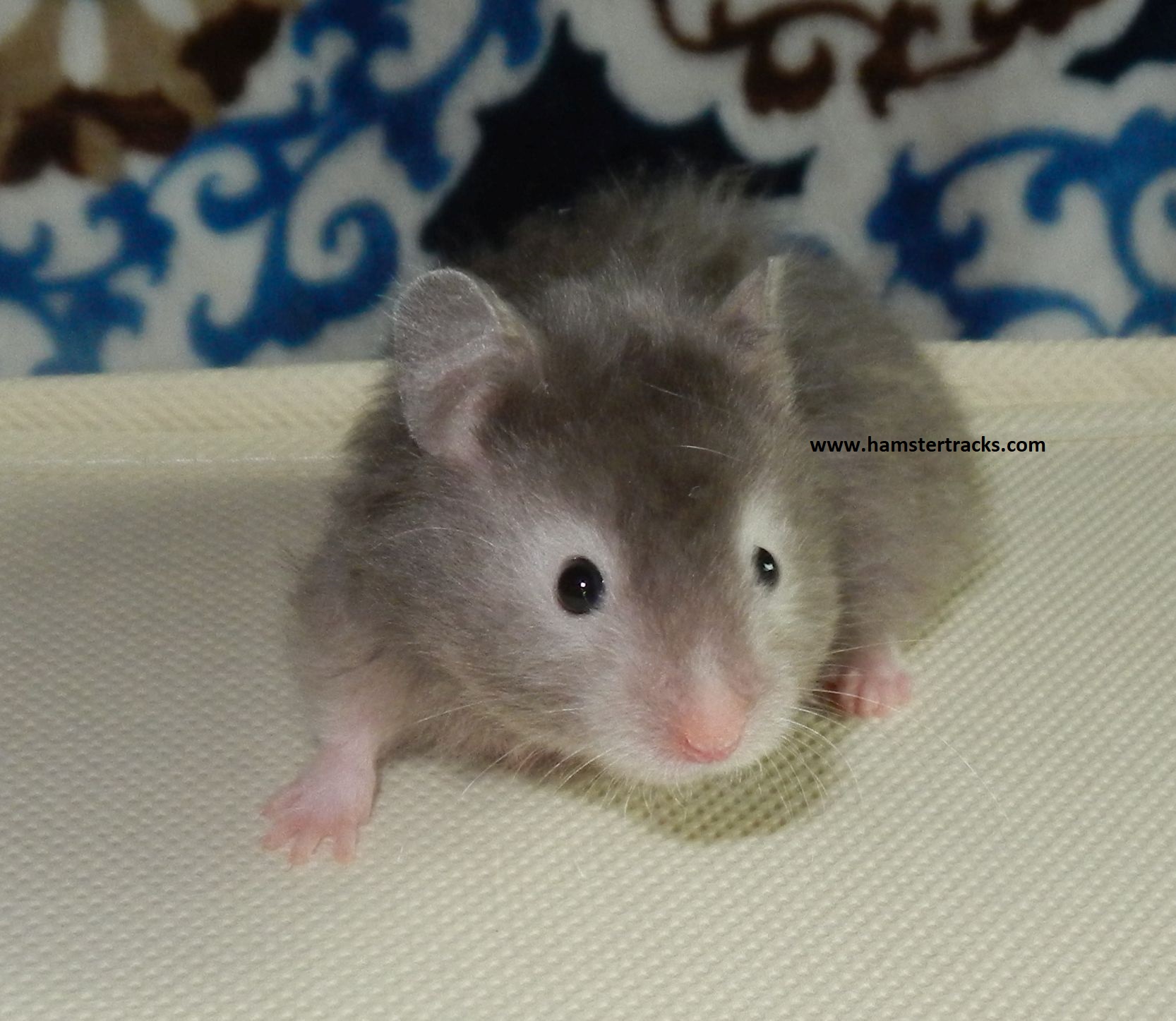 |
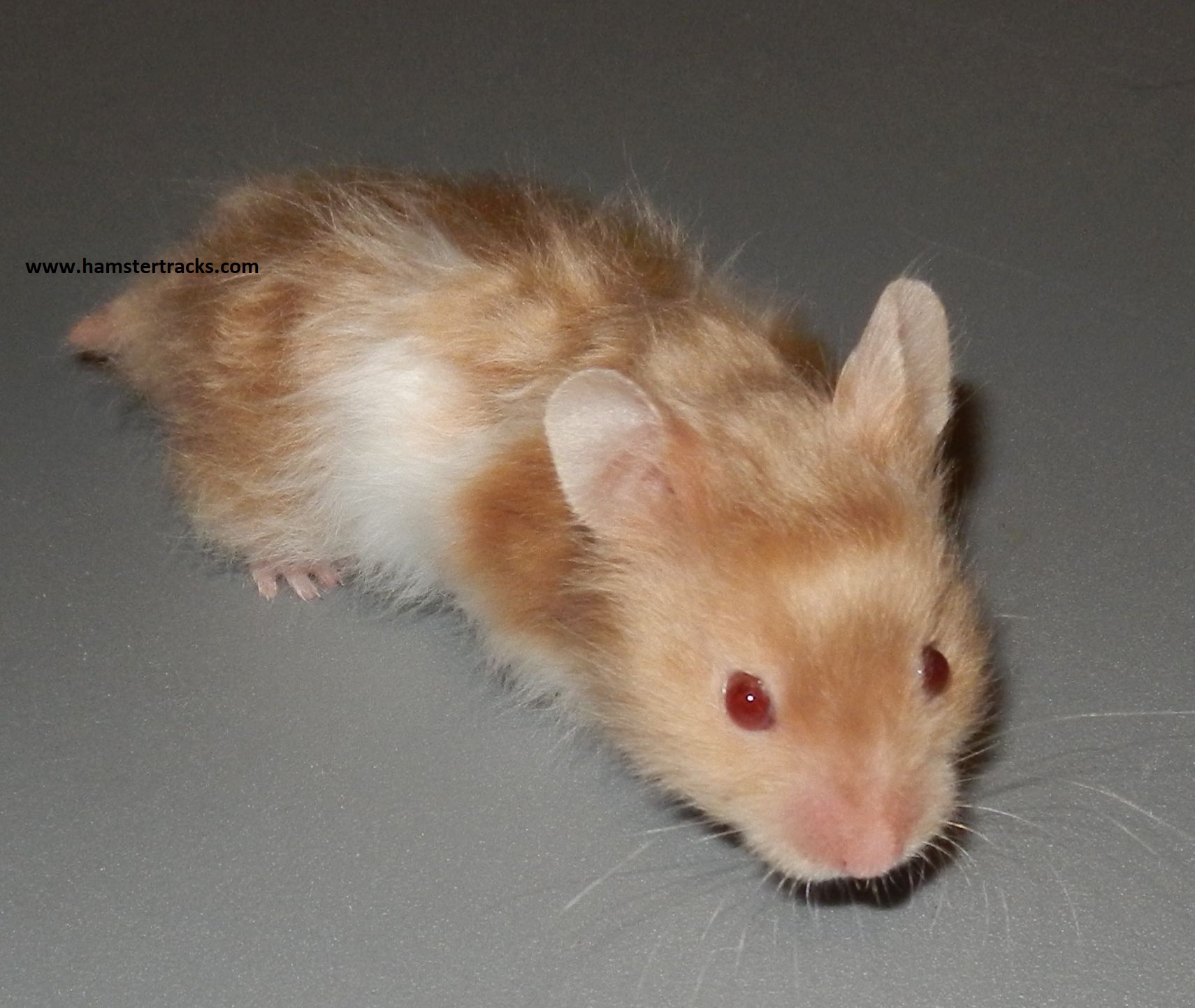 | Mink This is a very young long-haired mink banded having a crazy hair day. Mink is a red-eyed cream with the sable gene added, and it is a very pretty color. She also had the satin gene, which makes her appear darker than she would without it. Any time cinnamon is added, the eyes become red, so the mink color also has red eyes. |
| Black-Eyed Ivory Oh my heart! this is one of my all-time favorite hamsters, Fuzzy, as a baby. She was a life-time climb-up-the-hand ham, and I think a little piece of me also died the day she passed away. She is probably the entire reason why I LOVE this color so much. Ivory is silver grey and cream, combined. It produces a lovely off-white color with black ears and black eyes. |  |
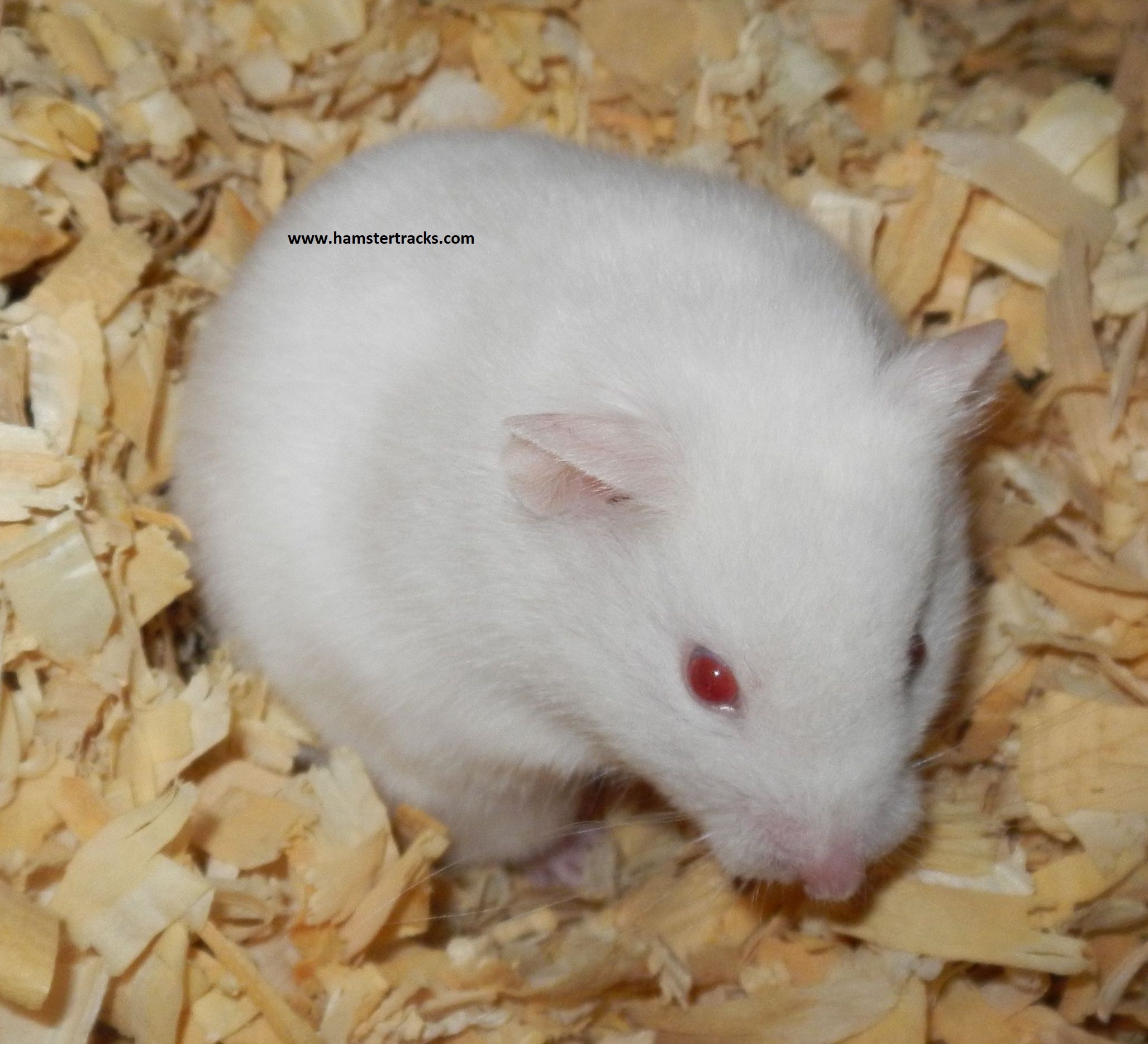 | Red-Eyed Ivory This is one of the ways “white” can be produced in Syrian hamsters. This combination is silver grey, cream, and cinnamon. It is not as desirable a color, simply because people tend to think “lab rat”, NOT because there is anything genitcally wrong with the combo. It does sometimes pop up if you have cinnamon hiding and are going for ivories, so here is what it looks like! |
| Black Black is another very popular Syrian hamster color. |  |
 | Dove A dove colored Syrian hamster happens when black and cinnamon combine. Dove is another of my absolute FAVORITE colors, and one that I focus on at Hamster Tracks. |
| Chocolate Chocolate is yet another of my FAVORITE colors. Chocolate is produced with the combination of the black and the rust genes. It is another one of the 3 main colors I breed for her at Hamster Tracks. |  |
Yellow Combinations
Yellow is one of the more interesting genes to work with. There is a reason the yellow gene works the way it does, but rather then getting into all of the technicalities of it, I will just focus on what it actually produces.
A yellow male, when bred with any non-yellow female will produce 100% yellow female pups. These are called tortiseshell hamsters, which is the same thing (in hamsters) as calico is in cats. One copy of the yellow gene (in females) produces yellow patches. These patches can be actual patches, as the word implies, or they can be brindled, meaning they’re tiny patches heavily mixed with the other coloring involved.
Any color can combine with yellow, to produce as many beautiful combination colors as possible, limited only by the number of color genes we have discovered to work with! (Yes, it’s SO cool!) The most common combination color is yellow-black. (yellow + black) So, in a female, you usually get torts, and in males you (always) get plain yellows, or these combination colors.
A yellow female, when bred with a non-yellow male, will produce, stastically, 50% yellow males, and 50% yellow females. Just keep in mind, stastics don’t yield precisely 50%, each pup just has a 50% chance of being yellow just like each time you flip a coin it has a 50% chance of being heads. (You can flip 4 heads in a row, just like you can get a litter of 4 yellow pups!)
Finally, and this is the most complicated part – a female “yellow” is always tort, UNLESS it was bred from a yellow dam (mom) and a yellow sire (dad). Then, if she received both copies of the yellow gene, she can be a true yellow, with the cheek flashes and all. (This part is harder to understand without a background in genetics, so unless you’re reeeeeeeeeeeealy curious, don’t risk loosing brain cells trying to thoroughly understand it!)
Most of the time when there’s a female with the yellow gene, there is only one copy, and it ALWAYS presents with the tortiseshell look. (One major hiccough in this simplistic explanation is that torts can, and often are born with only tiny yellow patches, so tiny it might just be a few hairs, and it can be hard to spot! But lets just leave that one completely alone for now!)
Now that we got through our overly-simplified genetics lesson, Let’s get on to the pictures!
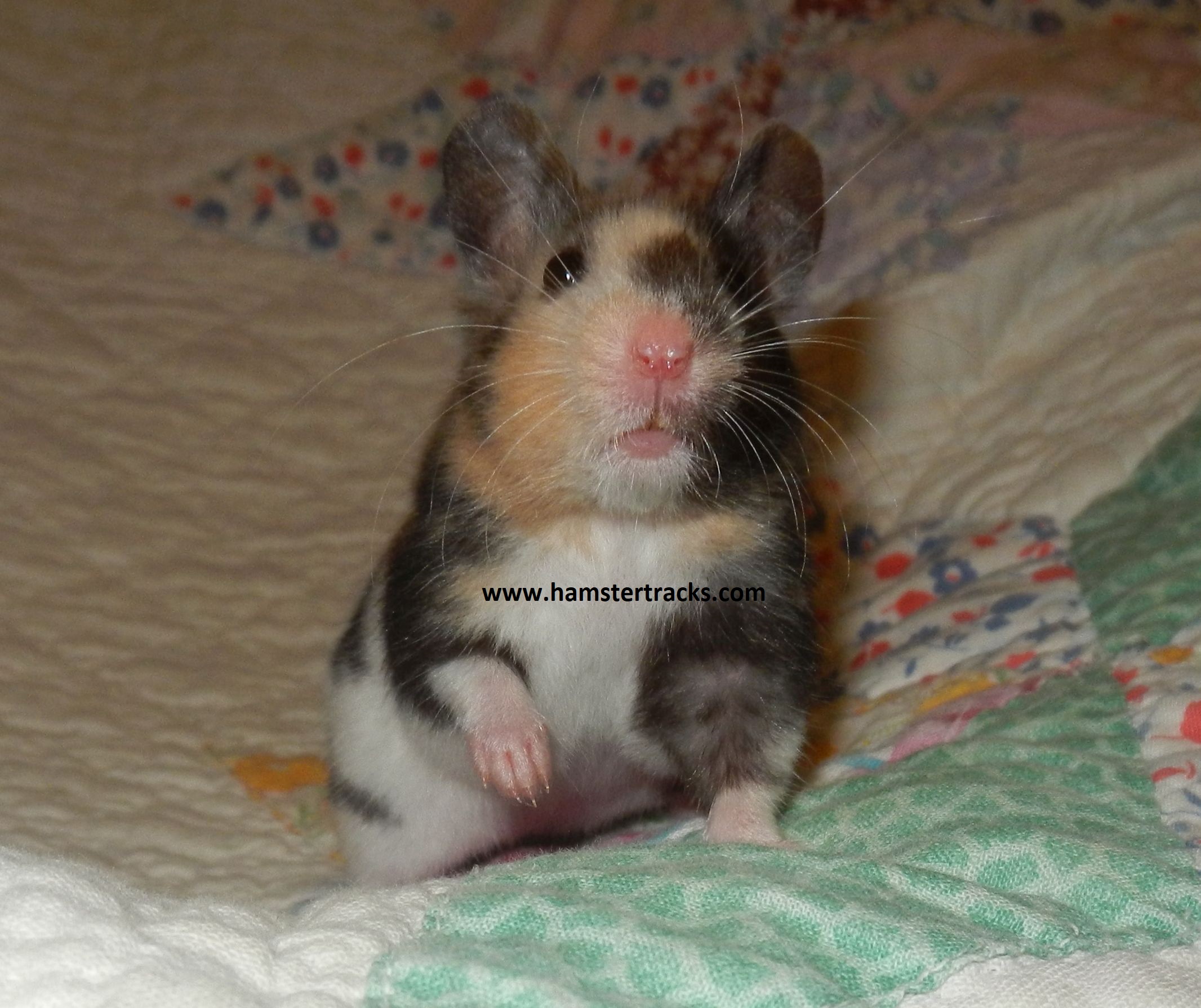 | Black Tort Banded Narice was a striking tortiseshell who also had the polywhite gene. This lightened her tort patches to a very pretty light yellow. |
| Black Tort Banded This is another example of a black tort banded. When a girl does not carry any copies of the cream gene, the yellow patches are darker, like this. (This is the reason I do not currently breed creams, because I like to keep cream out of my yellow lines, and if I just don’t have cream, it never sneaks in!) A black tort who carried cream would have tort patches somewhere between the yellow of Narice above, and this beauty, Cinnamon Spice. There is nothing wrong with a pet hamster who has yellow and cream combined, but it is bad in the show world so breeders should always try to steer clear of it. | 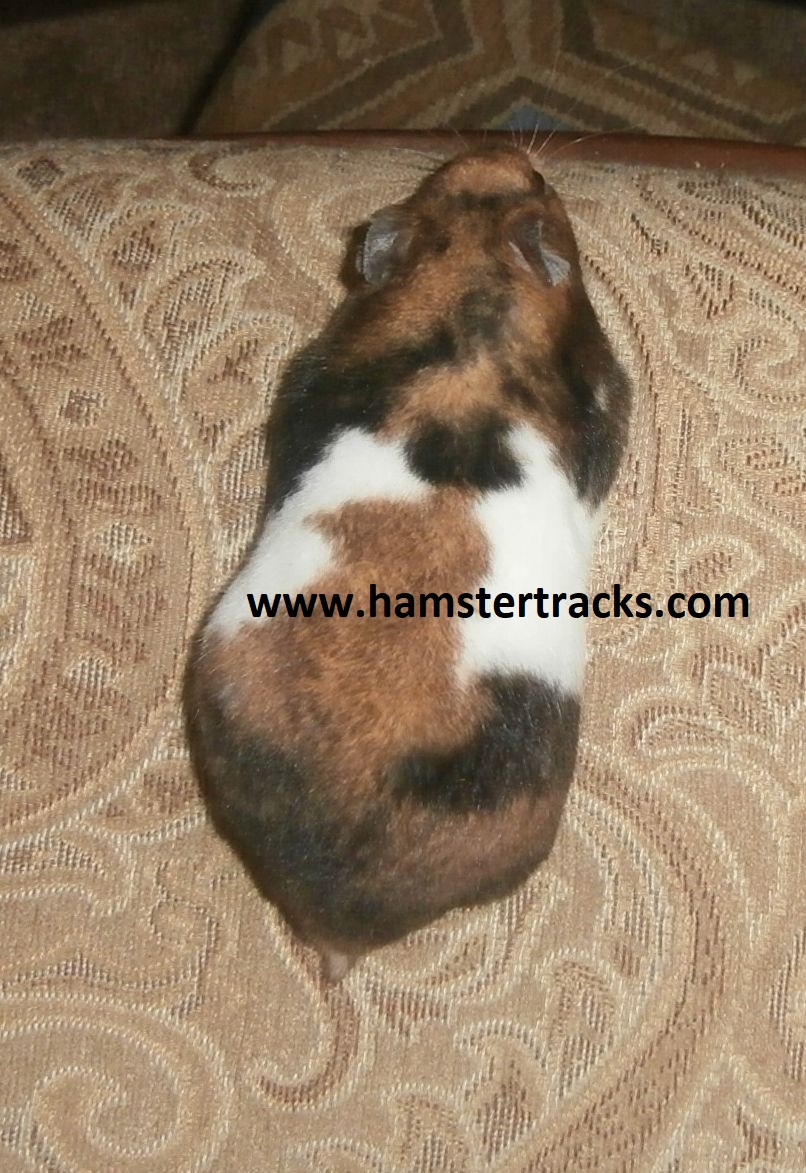 |
 | Silver Tort Silver Grey, black, and one copy of the yellow gene yields a silver-black tort. This young pup is an example of a tort with out many tort patches! The main one is right there on her neck. Notice the very light, almost grey coloring of her tort patch. The silver grey gene changed the yellow to grey. |
| Chocolate Tort Banded Dominant Dominant Spot This girl has nice-sized markings, with, mostly likely, the polywhite gene present. |  |
 | Chocolate Tort (brindled) The chocolate tort is in the front. She had a nice sized yellow “patch” across her face. (Which, I must say, made her have that incredibly sweet look to her!) Behind the chocolate tort is another black banded tort, who ended up with crazy markings. (More tort than black, as you can see!) |
| Golden Tort Dominant Spot This is what golden torts look like. Notice the extra-light tort patches on this girl, because of the polywhite gene. Golden is a good color to combine with yellow, because the contrast is a noticeable one, though not as noticeable as in black. | 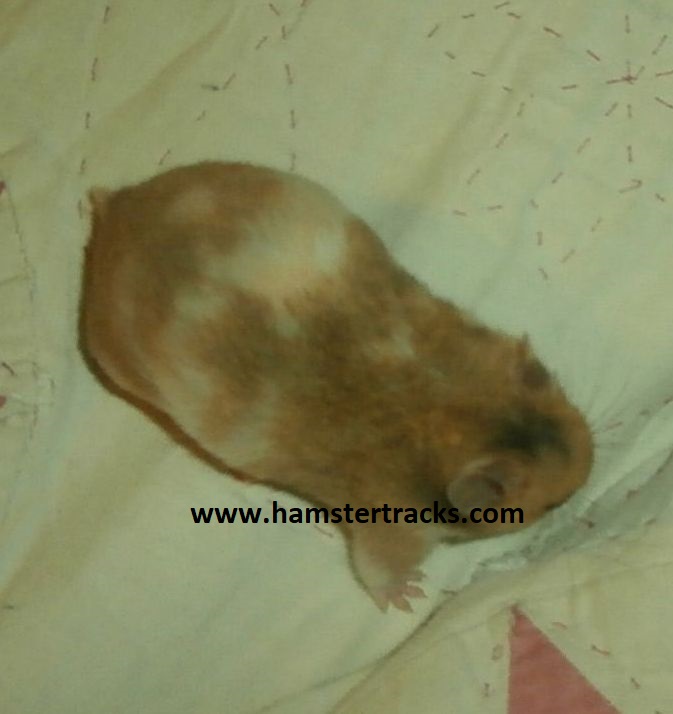 |
 | Cinnamon Tort Banded Polywhite This is a cinnamon tort. It’s easy to see why cinnamon torts are not a desireable outcome from a breeding. The yellow patches on the cinnamon coloration are so close to the same, that it looks like a regular cinnamon hamster. Again, this is not bad for the hamster, or a pet home, but not something to purposefully breed for. |
| Dove Tort Banded Dove torts are a very desirable tort combination color! The grey/yellow contrast is both striking and beautiful. I often select pairings with dove tort in mind. (This is also how occasional cinnamon torts slip through, because of the genes in common!) | 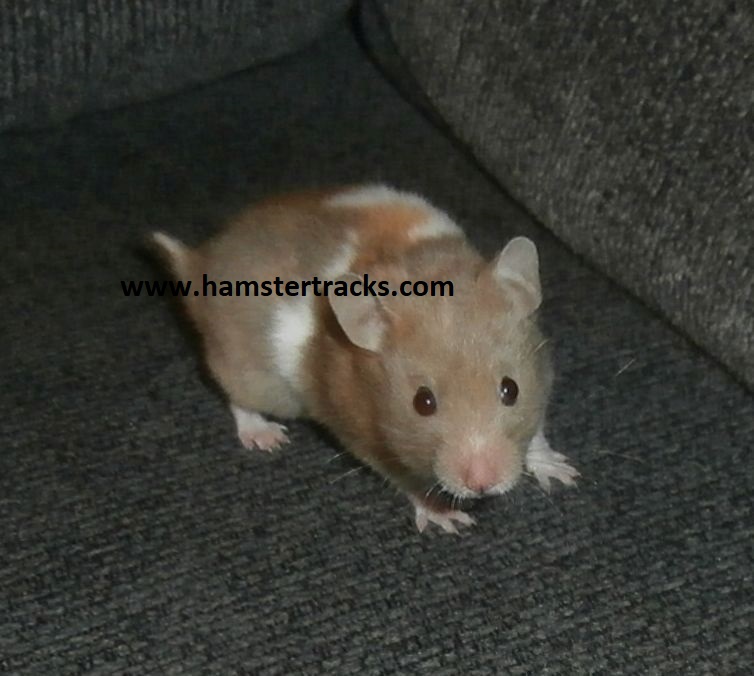 |
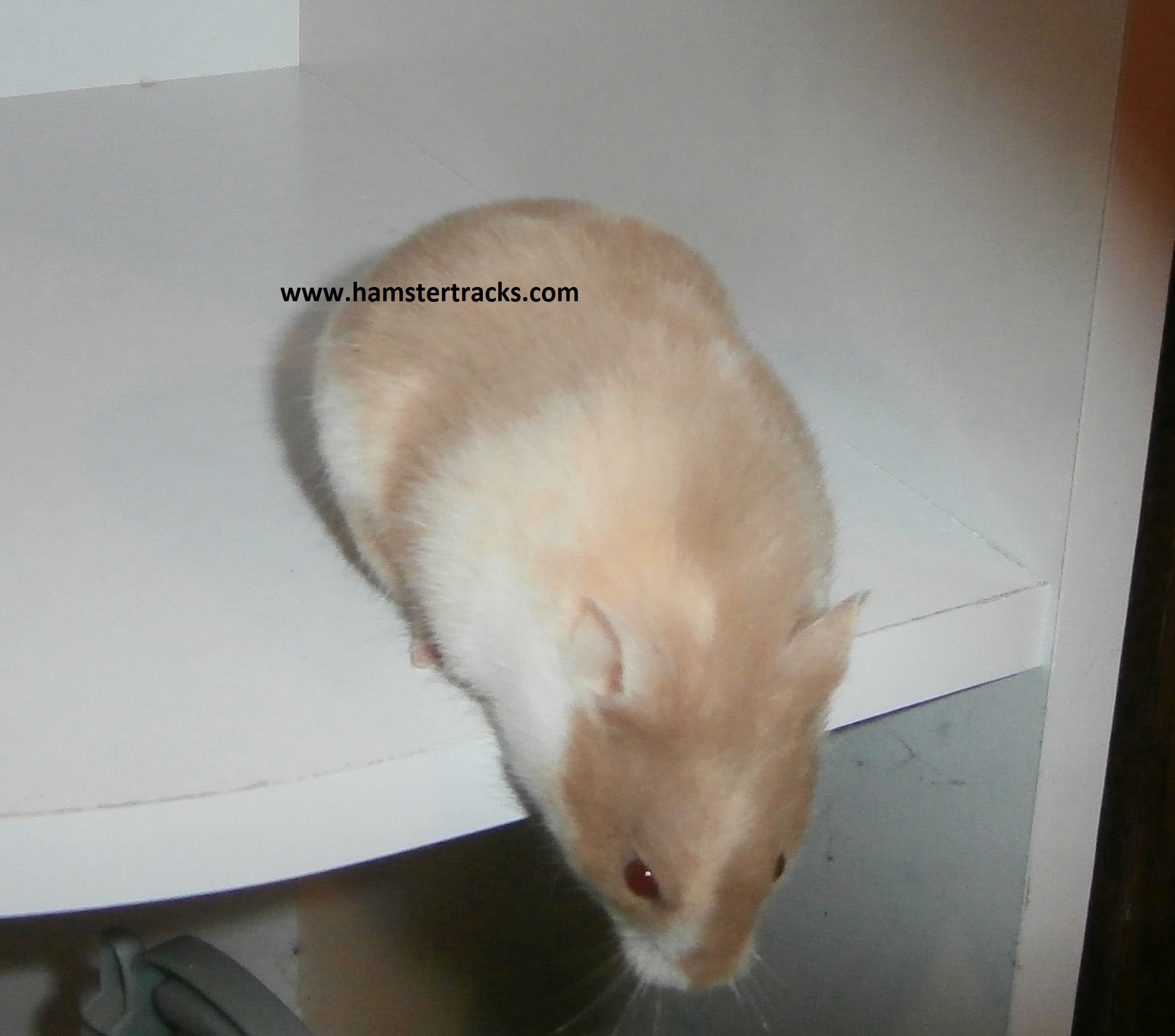 | Champagne Tort Dominant Spot Polywhite This is a champagne tort, which is a color I didn’t cover above. The color combination is black, rust, and cinnamon, with the yellow gene added. The polywhite gene is massively lightening the yellow patches. |